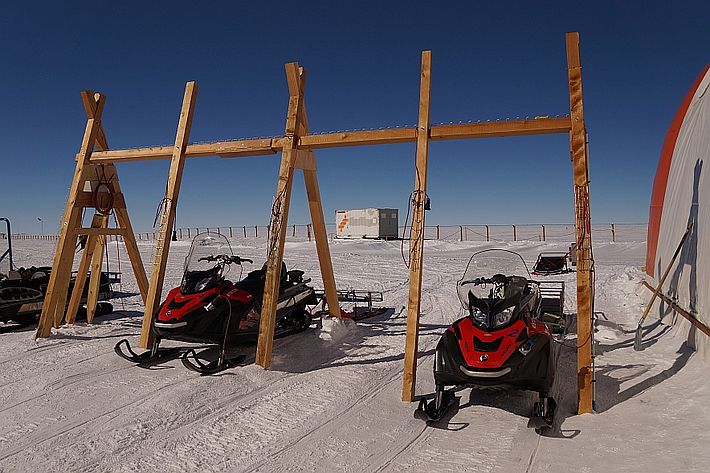22.12.2017 | News
After a long journey via Australia and Tasmania, Matthias Jaggi arrived at the Antarctic research station Dome C. Immediately, he started preparing his experiments, but had to stop after only two days: because of the elevation and very low temperatures, he got a strong headache and was feeling sick.
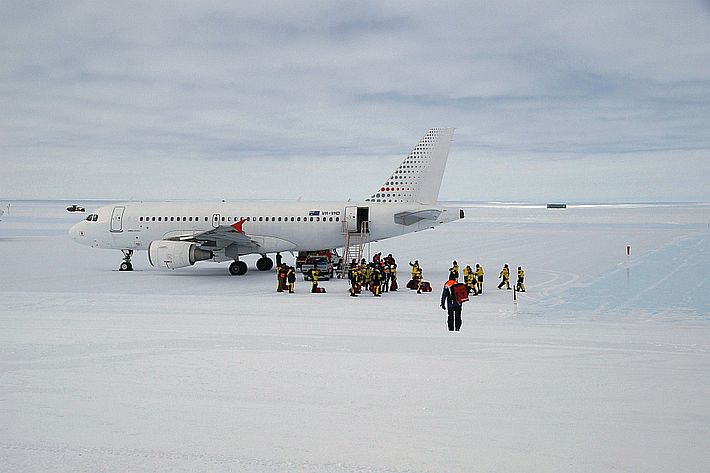
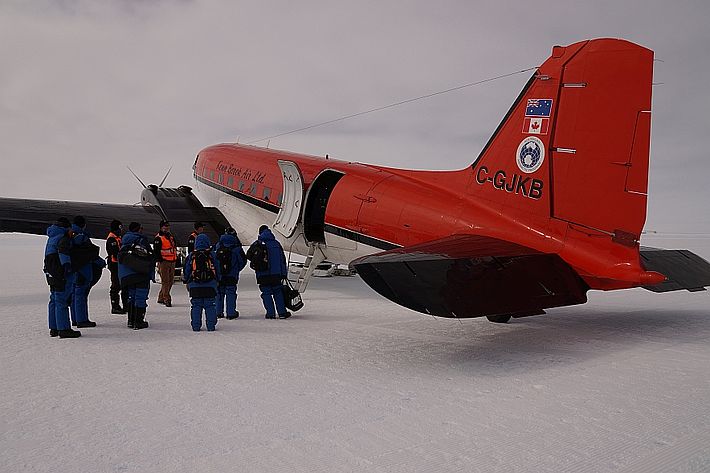
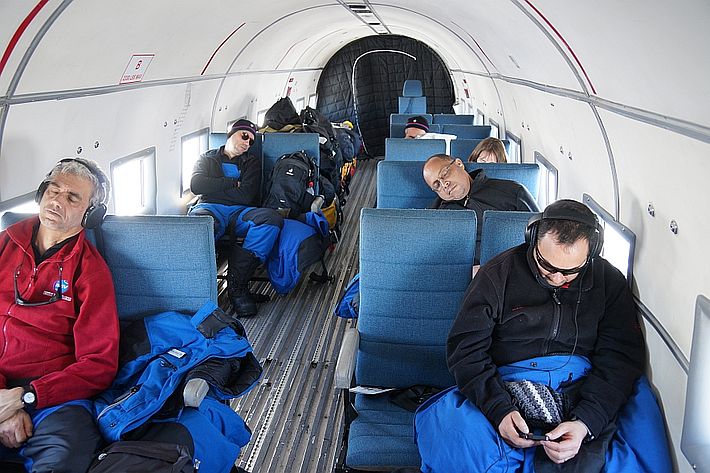
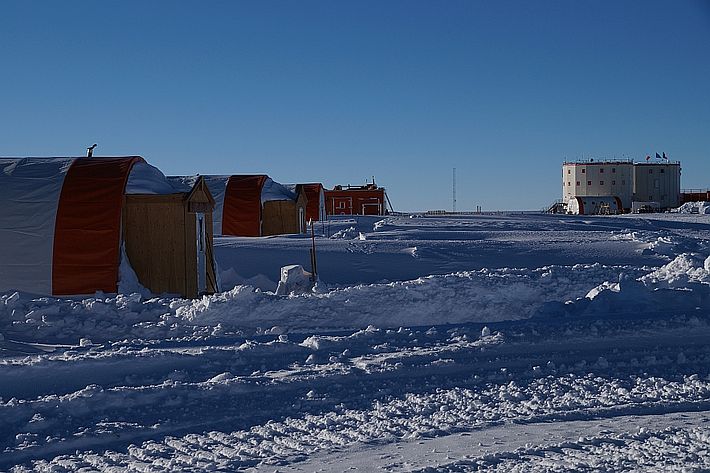
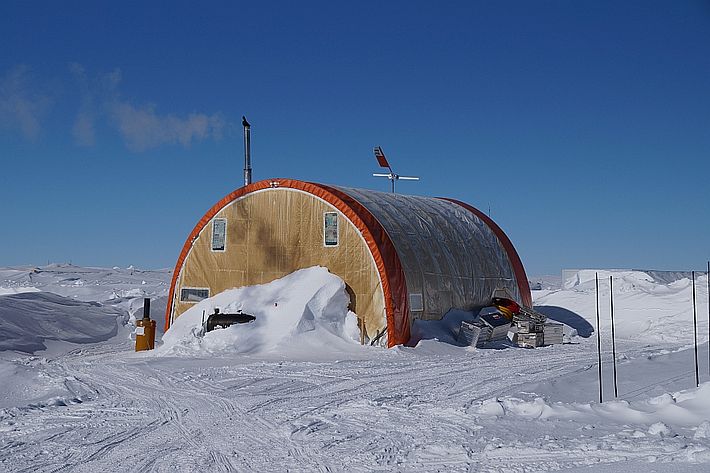
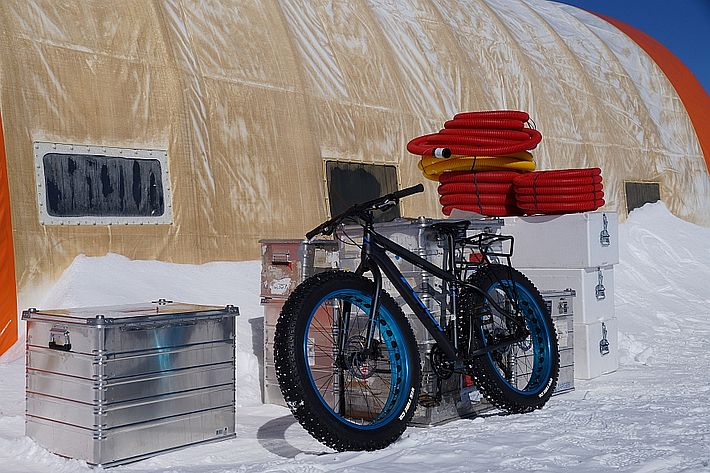
At Hobart, the capital of Tasmania, I met the French crew. Hobart is the starting point of our Antarctica expedition.
Flying from there to Antarctica is almost like any other flight, just with a few extras. Before departure, we had to get safety instructions for the flight at the Australian Antarctic Division (AAD), pick up our expedition clothing, and pack our bags accoring to safety rules. On the flight to Wilkins airstrip in Antarctica, we were allowed to wear light clothes but had to change into warm garments one hour before landing. Departure time was early in the morning in order to make sure that the landing strip which consists of ice is still hard enough for the Airbus to land. The plane is equipped with two additional fuel tanks so it can make it back to Hobart (2700 km) in case landing is impossible because of poor visibility.
Landing in the middle of nowhere
After the second attempt, we landed safely at Wilkins - which is definitely in the middle of nowhere: Except for a few housing containers and some old snowmobiles, there is nothing to be seen. From here, we continued our trip with a small propeller-driven airplane, this time a bit less comfortable. Without heating and in an unpressurized cabin, we are flying at an altitude of almost 5500 meters. Noone takes the offered oxygen, although doing so might have been a good idea (see picture in gallery).
More convenient than expected
After four hours of flight, we finally landed at Dome C. The station is located at 75,1°S, 123,3°E on the Antarctic plateau, at an elevation of 3233 m a.s.l, but because of its proximity to the pole and the cold, it feels more like 3700 m. There are two main towers with kitchen, recreation rooms, dormitories, labs, a sewage-treatment facility and much more. As soon as there are too many people staying at Dome C, they open the so-called summer camp. This is where most people of our group are staying, in a kind of housing containers. I was surprised that the containers are very well heated and that it is possible to take a shower every day. Of course, there are also some rules to follow. For example, the water recycling facility is very complex.
An eager start with consequences
Once I had settled, I started with the preparations for my experiments. During the first two days, I felt very well and might have overdone it a bit. Now, I already had to pause for two days because of a very strong headache and a dry cough. Looking back, it seems sensible to allow more time to become acclimatized. The heigh elevation and a perceived temperature of -52°C are taking their toll on the body.
Anyhow, I was already able to prepare my field site, the SnowMicroPen seems to work properly and the metamorphism boxes for my experiment are already placed in the -50°C cold ice cave. My equipment is arranged and complete. And I have already got the introduction for the snowmobiles.
No I am hoping that I can start next week with profiling and taking the snow blocks and that I'll be able to start the experiment as soon as possible.
Contact
Copyright
Copyright
WSL and SLF provide the artwork for imaging of press articles relating to this media release for free. Transferring and saving the images in image databases and saving of images by third parties is not allowed.
